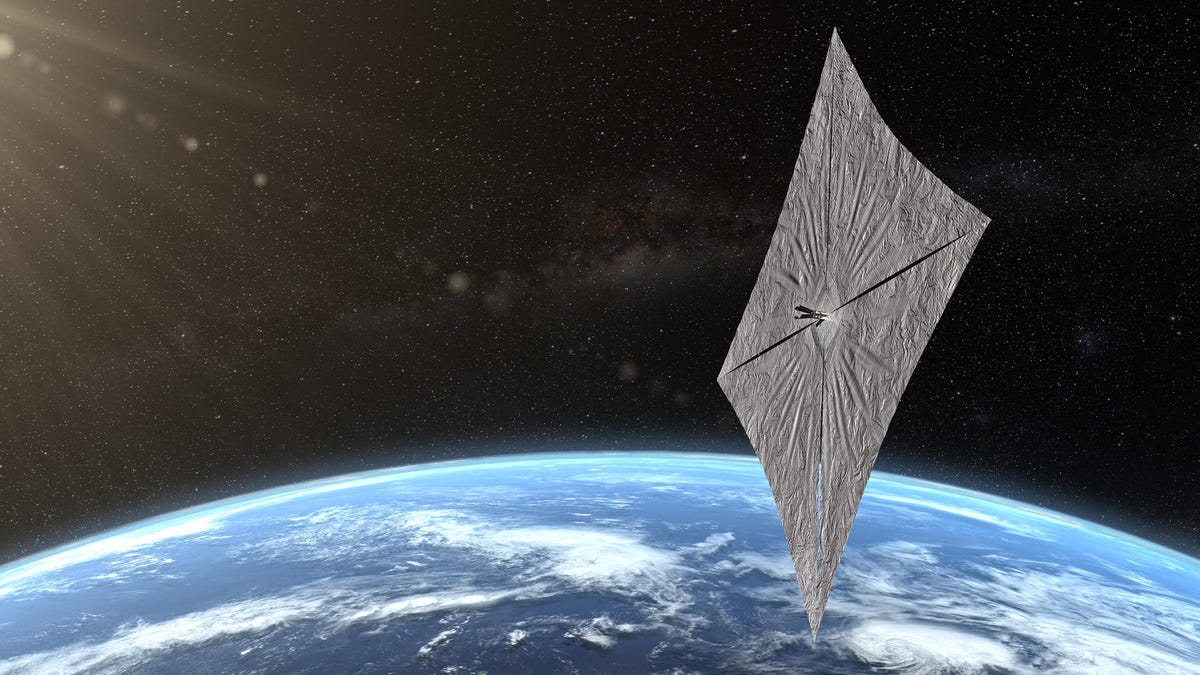SpaceX Falcon Heavy's first night flight to carry Bill Nye's solar sail
The Planetary Society is launching the Lightsail 2, a type of craft that could eventually explore other solar systems.

An artist's rendering of Lightsail 2 orbiting Earth.
The third-ever launch of Elon Musk's massive Falcon Heavy rocket system is set for the evening of June 24 from Kennedy Space Center in Florida. Aboard will be two dozen satellites, including the Planetary Society's groundbreaking Lightsail 2.
You might recall a few years ago that science celebrities Bill Nye and Neil DeGrasse Tyson helped lead a Kickstarter crowdfunding campaign to get Lightsail off the ground. The more than 23,000 people who contributed to the campaign will get to see what they paid for.
The mission of Lightsail is to create a whole new kind of spaceflight called "solar sailing" that is powered solely by the pressure of radiation and photons coming off the sun. A bedroom-sized Mylar sail is unfurled to catch the particles, much like a sea ship's sail does with the wind.
Astronomer Carl Sagan talked about solar sailing decades ago, and physicist Stephen Hawking endorsed it as the ideal means of visiting the Alpha Centauri system this century. But no solar sails have yet made a controlled flight in space.
In 2015, the nonprofit Planetary Society launched a prototype of Lightsail to low-Earth orbit. Basically the craft was turned on, its systems tested and sail unfurled, but that was about it. This month's Lightsail 2 mission fixes some of the bugs discovered in 2015 and aims to actually fly the craft in an orbit around Earth, testing out the ability to maneuver by turning the Lightsail along the way.
"This is history in the making -- LightSail 2 will fundamentally advance the technology of spaceflight," Nye, who is CEO of the Planetary Society, said in statement.
The Planetary Society aims to develop the Lightsail as a way of adding a propulsion system to Cubesats. Cubesats are tiny satellites that can be used for everything from science experiments to Earth observation to even providing broadband internet, but they lack any real means to maneuver around once in space. Adding a Lightsail to a Cubesat could allow it to raise and lower its orbit on its own, significantly increasing its capabilities.
Lightsail 2's launch is set for 8:30 p.m. PT/11:30 p.m. ET from Florida. This would mark the first time we've seen a Falcon Heavy lift off at night. Also on board will be NASA's new Deep Space Atomic Clock and a vehicle to demonstrate a new, greener type of rocket propellant, among others.

